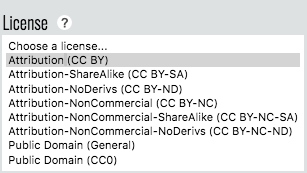Q4 Citing Your Source
Introduction
Did you know that when you do research you should be giving credit to the author or authors? This is called citing your source. All quotes and references that you use in a presentation or paper must be cited. Remember in Be Legal and Fair in Thing 7 how you learned about copyright and how important it is not to plagiarize?
Many databases provide you with citation tools. All of the Mel.org databases have tools to help you cite your source.
If you find your source does not have a citation maker, there are many online citation makers to help you.
I Can Statement
- cite sources appropriately
Key Vocabulary
Attribution: Attribution is giving credit to the person who creates the work.
Boolean Logic: Boolean logic is a system of logical thought developed by the English mathematician and computer pioneer, George Boole (1815-64) and is used when searching on the internet.
Citation: A citation is a quotation from or reference to a book, paper, or author, especially in a scholarly work.
Vocabulary Game
Play the interactive Quizlet Game: Direct Link
In this Quest, you are going to learn how to create citations easily for resources that you use in your classwork. There are online tools where you just add all the information from the resource you used or created (You can create citations for your own work too!) and it will create a citation for you to use in your bibliography.
Steps
1. Open the following document and answer the questions on Benjamin Franklin. You can search using Michigan eLibrary or Google. Make sure to use boolean logic when you search.
2. When you find an answer you will cite the source using APA or MLA format. Your teacher may suggest which one to use.
3. If your information came from a web site without a citation maker, you can use one of these Citation Makers, including Landmark Citation Machine, BibMe, KnightCite, EasyBib, and eTurabian. You need to check with your teacher and see if you are required to use a specific citation maker. Don't forget to keep your source open while you create your citation so you don't lose the information.

4. Watch this video on BibMe to help you create your first citation.
Creative Commons License Attributions
5. In previous Quests, you may have learned about resources with a Creative Commons license. These are resources that are FREE to use by anyone. Though they are free, there still may be some restrictions on them. Here is a list and their descriptions:

- Attribution (by) - All CC licenses require that others who use your work in any way must give you credit the way you request, but not in a way that suggests you endorse them or their use. If they want to use your work without giving you credit or for endorsement purposes, they must get your permission first.
-
ShareAlike (sa) - You let others copy, distribute, display, perform, and modify your work, as long as they distribute any modified work on the same terms. If they want to distribute modified works under other terms, they must get your permission first.
-
NonCommercial (nc) - You let others copy, distribute, display, perform, and (unless you have chosen NoDerivatives) modify and use your work for any purpose other than commercially unless they get your permission first.
-
NoDerivatives (nd) - You let others copy, distribute, display and perform only original copies of your work. If they want to modify your work, they must get your permission first.
6. OpenWashington has created a tool to help you create citations for resources with a Creative Commons. It is a fill in the blank form that easily creates the citation for you.
7. Using something you have created in class, create a citation with the Attribution Tool. Choose at least two of the attribution licenses and then share your results in a Google Doc/Word Doc with your teacher.
Completing this Quest
Save your citation information along with your research in your File Space.
Check off this Quest on the 21t4s roadmap
I am ready to move on Quest 5
Competencies & Standards
MITECS Michigan Integrated Technology Competencies for Students, and
1. Empowered Learner
a. Articulate and set personal learning goals, develop strategies leveraging technology to achieve them, and reflect on the learning process itself to improve learning outcomes
d. Understand the fundamental concepts of technology operations, demonstrate the ability to choose, use and troubleshoot current technologies, are able to transfer their knowledge to explore emerging technologies
2. Digital Citizen
b. Engage in positive, safe, legal and ethical behavior when using technology, including social interactions online or when using networked devices
c. Demonstrate an understanding of and respect for the rights and obligations of using and sharing intellectual property
3. Knowledge Constructor
a. Plan and employ effective research strategies to locate information and other resources for their intellectual or creative pursuits
b. Evaluate the accuracy, perspective, credibility and relevance of information, media, data or other resources
5. Computational Thinker
b. Collect data or identify relevant data sets




